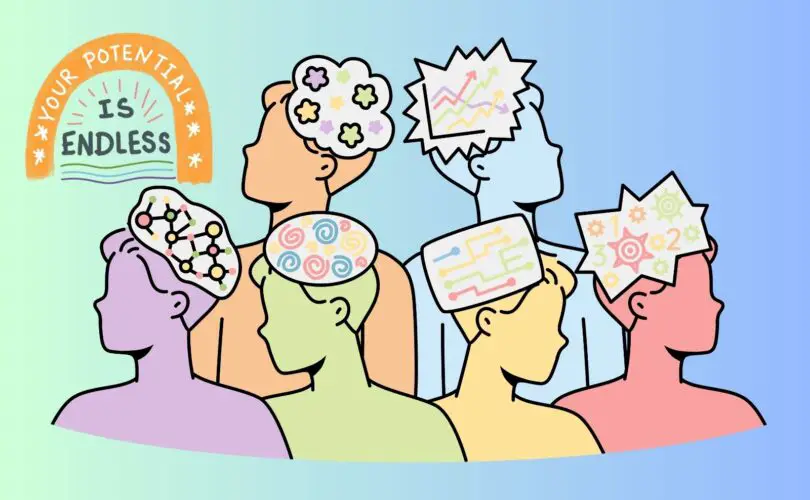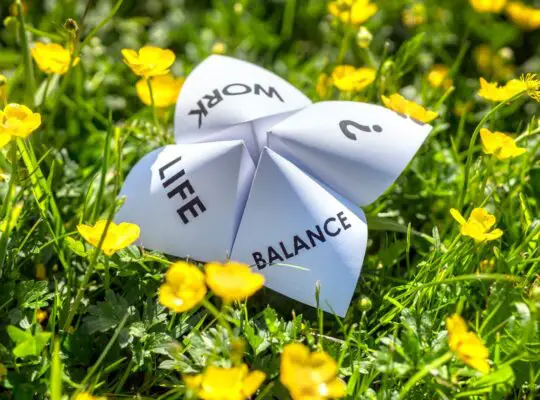???? Ready to unlock your true potential? Dive into this latest blog post to uncover the powerful formula for unleashing your greatness and living your best life. ????
You only get one chance at life, and it’s easy to get caught up in the competition and the chaos without thinking about what you really want.
What is it that you really want? And what is it that holds you back from achieving what you want from this life? Is it a lack of free time? Is it a need for money?
Or is it down to a lack of opportunities? Is the economy to blame? Or a motivation problem? Do you blame your upbringing or the company you work for?
You can probably come up with a long list of reasons as to why you aren’t in the position you would like to be in, and you aren’t the only person who feels this way. Nor are you the only person who makes excuses or points to justifications.
An idea that is prevalent throughout society is that everyone is entitled to success. Everyone can find success, and they should. Everyone absolutely has the right to happiness, it’s just that so many of us tie our happiness to our success. And if you are chasing success in the wrong places, then you are going to have a difficult time reaching your highest potential.
A lot of people hold on tight to various formulas for life, from events plus responses equals outcome to abilities plus passion plus opportunities equals satisfaction.
While you may find these various formulae helpful, there is a greater formula, one that was designed specifically for you to achieve your highest potential.
Also read: The Art and Science of Motivation – Living Your life to Its Full Potential
The Potential Formula
Set your intention + give yourself permission + commit to it + take action = Highest Potential.
There are a lot of factors that weigh into how our lives unfold. A lot of things are completely outside of our control. And when people don’t like the outcomes, they are getting, they usually look for somewhere else to lay blame.
You can blame it on everything from the economy and your education to nepotism and the weatherman. Most people don’t reflect inwardly and consider what does lie within their control.
While it might feel like there isn’t much within your control, you have a lot more power than you think. In the Highest Potential formula, you are in control of every element. Only you can decide your intention, and only you can give yourself permission to proceed, only you can commit to making your intention come to fruition, and only you can take action to make it happen. It’s entirely in your hands.

Read next: 25 Healthy Morning Ritual Ideas
#1 Set Your Intention
You aren’t the only person living a hectic life, nor are you the only person dealing with stressful situations on the back of stressful situations. Some days, it feels like you barely have time to eat lunch or even grab a coffee. So, how on earth could you have time to live by a formula that requires you to sit down and set intentions?
Reader, that’s precisely what you need, and your stress-filled life is precisely why you need to get in the habit. Setting intentions helps you determine the mood of your day, it allows you to take control instead of letting your day dictate you. You determine how your day unfolds.
The term intention simply means a purpose or aim. It’s something that you plan to complete, a thing you want to achieve. And when you set an intention, you start to pay more attention to what you want to achieve, and it will do incredible things for you on your path to achieving your highest potential.
Setting intentions is empowering, you become the conscious creator of your life rather than the person who allows life to happen to them.
So, why is setting intentions the first step in the formula for achieving your highest potential? Well, the benefits are many. It isn’t a woo-woo concept, it’s the foundation for setting any goals for success. When you learn, and when you commit, the first step you can take to achieving goals is setting intentions.
More than just the first step, think of it as an initiation. It has to align with your values, and the intention is the tool that will move your efforts forward. And by setting intentions regularly, you can tweak your path or change course entirely if need be. You can set lifelong intentions and smaller intentions, whether it’s for a day or an hour. The key to setting an intention is to make it actionable and specific.
Some intentions are emotional, they involve emotions you intend to feel about a situation, event, or the future. When you set intentions, it is you taking accountability by taking control of your choices. It’s an efficient way to be proactive in your life. You are making a purposeful choice on how you want to live your life.
When you set an intention, you are making a commitment to live a purposeful life. When you live more purposefully, you are more present in every aspect of your life.
Read next: Top 50 Ways To Feel Self Assured
How To Set Intentions For Success
The question now is how do you set intentions and do so to ensure your success?
1| State the intention
A part of the process requires you to decide or recognize what you want, once you do, you need to write it down or vocalize it. Stating your intention is an important part of the process. It’s a way to hold yourself accountable.
With a clear understanding of your goals and well-defined values, you can now look at small, repetitive actions that will help you move closer to achieving your intention. Now you can fully state the intention in a declarative sense and back it up with how you plan to achieve it.
2| Clarity
Whatever the intention, you have to be completely clear about what you are trying to achieve, and what results you expect to come as a result of achieving it. This highlights how important it is to be conscious of where you spend your energy and what you focus on. It’s key to making it a reality.
It is much easier to achieve what you want and funnel your energy into it when you are clear on what you want. Life will always bring ups and downs, you can expect life to bring ups and downs when you’re chasing intentions, too.
3| Positive Intentions
An intention is a focal point for you to channel your energy and effort, and it will likely get tugged in different directions. Whatever it is, make sure it is positive. It’s about phrasing something as an I will rather than saying I won’t.
For example, if you set an intention to quit smoking you should phrase it as I will be smoke-free today rather than I won’t smoke. Putting a positive spin on every effort helps you overcome negative emotions that may stand in your way.
4| Simple Intentions
Not every intention has to be lofty – in fact, every intention should be realistically actionable. So, as you get started, you can think about how much you dread Monday morning and set an intention of I will go into Monday morning relaxed and ready to connect with others.
Once you get into the swing of setting intentions, it will become easier to set and achieve them.
They will become a natural part of your routine, and when they are, you can look at setting more future-based intentions. In addition to those daily intentions, you can set them for a week, a month, or even years into the future. In all cases – be specific, envision it, and feel it.
5| Address Limiting Beliefs
A limiting belief is a judgment that you believe wholeheartedly. It typically has a negative impact because it is holding you back. If you believe you are incapable of public speaking, you might not pursue your dream job for fear of that aspect of it.
Any doubt you have can block you from achieving your intentions. So, your intention-setting journey has to include addressing those limiting beliefs. Your beliefs and desire reflect your mindset, so your mindset needs to align.
#2 Give Yourself Permission
Permission simply means that you accept that deserve to reach your potential and that you will do whatever it takes to overcome potential obstacles in order to achieve your intention.
As you get started, try writing out one intention for your day – absolutely anything you feel strongly about.
Ultimately, it should connect to your higher purpose or what you value. It can be absolutely anything. However, there are some examples below, which should help you get your brain into action and also show you how to positively phrase things.
- I will be calm in the face of stress.
- I will stay focused and present.
- I am going to be relaxed about what is happening in the office.
- This is an opportunity.
- I am going to network.
- I am going to pour myself into my partner.
- I will make an extra effort to spend individual time with each of my children today.
Write the intention on a sticky note. You can stick it to your computer monitor, on the fridge, put it in your purse or wallet, or carry it in your pocket. You want to keep it close to you, so it serves as an active reminder of what you intend to do.
In a symbolic move, you should write yourself a permission slip. In it, you need to give yourself permission to do what it takes to achieve your intention. So, this is your opportunity to think about the challenges that may stand between you and achieving your intention.
For example, if your intention is to make time for each of your children, your permission to sleep may give you permission to turn your phone off when you get home from work. The need to respond to every email or read every notification as it pops up is standing in the way of you achieving your intention, so remove the obstacle from your path and follow through with your intention.
You may need permission to share your feelings, it may be to delay judgment, or even to maintain a boundary. Whatever the potential obstacle, you need to give yourself permission to do what it takes to overcome it to achieve your intention.
You should keep your permission slip with the other sticky note. Check-in with those sticky reminders regularly throughout your day or task. Use it to ground yourself, and use it as a centering tool, use it to draw on your purpose.
You will face unique challenges, and everyone has their own priorities. It’s up to you to overcome obstacles and achieve your intention despite what other people are doing and in spite of what else might be going on.
Making intentions part of your daily routine is an exercise in vulnerability, it also requires strict setting and maintaining of boundaries. It doesn’t matter whether it’s big or small, intentions give you the space to say this is what I am going to accomplish, this is the risk I am willing to take, and these are the challenges I will face.
So, this is the boundary I will put in place to ensure that all of the above unfolds as I want it to. It doesn’t matter what time you are reading this, you can set an intention for the rest of the day or for tomorrow.
What is the intention, and what is the permission you need to give yourself? Write it all down and go for it.
#3 Commit To It
The dictionary defines commitment as, “the state or quality of being dedicated to a cause, activity, etc.”
The mind is complex, it can be a tricky thing. It’s one of the reasons many people fail to follow through. People set intentions, they have big goals, and they want to place their trust in themselves and follow their gut. That all seems quite basic, so why do so many people fall at the first hurdle? The biggest disconnect comes between intention and action.
Some people believe the formula is as simple as intention = action, but that loses some pretty big steps. Setting intentions is important, but you can’t simply set your intentions and hope for them to happen. You have to make it happen.
So many people are convinced that all it takes to accomplish something is determination and willpower and discipline, but they forget to factor in how powerful circumstances can be. It’s a trap, and you can’t allow yourself to fall into it.
Without realizing it, many people just assume by having their intention they have made a decision about what they plan to do and now it’s time to follow through. All it takes is good intentions, and batteries come included. The missing ingredient is commitment.
There are a whole bunch of different tactics to shape your circumstances, and you have to use all of them. But what do you do when the obstacles are consistently creations of your own mind? Which mind do you trust? The one telling you to keep going? The only telling you to strive for growth? Or the one that tells you there’s no point?
Unfortunately, we aren’t as connected to our brains as we would like to believe. And when there’s a disconnect, sometimes your feet steer you in the wrong direction. Intentions should guide your actions, but that isn’t always the case, and the reason is a lack of commitment.
The primitive guidance system humans are equipped with might have been fine when large animals were stalking us as prey, but it’s a problem in the modern world. That reactive system that was oriented on survival was all about responding to threats as they arose and addressing needs in the present. It still works that way, but the world has changed. It’s that reactive system that can disrupt your commitment.
You decide to eat healthy, but the moment you smell baking cookies your efforts are derailed. You want to focus on work, but you hear music playing in the distance and your toe-tapping has taken you out of the moment.
You’re going to jog every morning, but by the third morning, the bed is too warm to leave. The primitive system is powerful, it responds to immediate threats and opportunities. You have to override it with a more intelligent guidance system, one that is guided by your commitment to follow through.
How do you get to that point? There is no magic bullet, but with the right mindset and some work, you can. When you learn to view your mind objectively, it gives you the breathing space you need to process. You’re essentially in a battle between primitive and intelligent guidance systems, so how do you make sure the latter wins out for commitment?
Some of the most common issues with failing commitment include good intentions you forget about, and – coming across a great idea that gets you excited, but failing to follow through when things get through. It’s something that will push you forward, and improve your work or relationship, but then you just… forget.
Spotlighting is a great tool for commitment – it serves as a strict reminder about what you want to do. It isn’t enough to commit, you need a physical reminder – a note, a post-it, a daily notification, a chime, whatever it takes to remember.
In addition to physical reminders, meditation is an excellent tool. It’s an opportunity to focus on your goal and your commitment and get in touch with how you feel about that journey.
Include as many cues in your environment as you can that point you to your goal – and if there are negative cues or triggers, remove them. You can use positive cues to trigger action.
Tools For Commitment
Here are some productive tools you can use to commit.
1| Say No
A lot of people make commitments that they don’t particularly believe in – that is where big issues come in. If you aren’t truly into it, then you need to practice saying no consistently. Don’t commit to something you aren’t fully invested in.
If someone pressures you to lose weight and you embark on a diet, you aren’t going to succeed because it wasn’t your decision to say yes to it. If you start chasing a promotion because your partner has pressured you to earn money, you’re going to struggle to achieve it or maintain it if you make it. You can’t let external pressure push you to chase things you don’t truly want.
One of the side effects of saying no is guilt, and maybe even shame. You might feel bad for letting someone down, but that’s on them. Don’t say yes to anything unless you mean it.
2| Delayed Gratification
When you are focused on a goal and committed to achieving it, you have to delay gratification a lot of the time. When you run into an obstacle or have a distraction dangling, consider for a moment what future you want.
As important as it is to live in the present, you have to consider the journey you’re on. You could stop and gratify your present self, but at what cost? If it’s something that will derail your commitment and action, then you have to learn how to delay gratification. Think about the action and how important it will be to the future you, even if the future you is only five minutes away.
3| Strengthen Action Muscles
Your follow-through muscles are the natural next step of using the future self tool. If you want to be someone known for honoring commitments, then focus on how great it feels when you do what you say you are going to do. How does your body feel when you follow through? How does your mind feel when you follow through?
In contrast, how does your mind feel when you procrastinate? How does your body react to procrastination?
Pay attention to the tension in your muscles, your ability to breathe, the sensations in your body, and even how your head feels. Strengthening your follow-through muscles is key.
4| Mindfulness
You set your alarm fifteen minutes early because you are committed to getting up a little bit earlier to exercise or read or whatever. But when that alarm rings, you find yourself hitting the snooze button, a promise to do so just once.
Or you decide to try again tomorrow. Mindfulness and meditation are practical tools to turn off autopilot to be more aware of the thoughts and excuses your mind creates. If you can grind those excuses to a halt before they can get running, you prevent them from multiplying and spiraling out of control.
If you feel as though the excuse is valid, then you have to revisit your commitment. For example, you commit to riding your bike daily. You are tired, and you feel like riding your bike may be detrimental to your exhaustion levels.
Get on your bike and ride it for five minutes and if you still feel exhausted after five minutes, you can hop off the bike and park it until tomorrow. Often, you find the excuse is a mental obstacle and you are capable of overcoming it if you just push yourself past the excuses with mindfulness.
5| Record It
There are an endless number of tools and productivity apps that can help you write or record your plans. Find one that works for you, even if it’s a pen and pad. The point is that you have a list of things you want to do, and you have it written down as a sign of your commitment.
You can write out a list of what you want to do, map it on your calendar, and tick it off as you go. The key is not writing down too many action points because if it’s too long or too hard, it’s impossible to get through and you will struggle with maintaining your commitment.
6| Avoid Distractions
If you struggle with getting through a to-do list, it’s probably because you are distracted by other things. For example, when you sit down to work, do you constantly open your inbox to respond to emails?
Turn off all of your notifications, put headphones in and listen to calming music, and hide your phone until it’s done. When distractions are too tempting, it’s difficult to ignore them. And, when you give in and lose focus, everything takes much longer than it needs to.
In addition to avoiding distractions, you can set blocks of time for certain tasks. Dedicate yourself to working solely on that task during that period and give yourself a short break before you start on something new. You can actively manage your distractions by doing this and use them as a reward.
7| Accountability
You need a system of measurement. If you commit to something, you need a system of measurement that ensures you follow through. A lot of people don’t realize when they are performing well – they’re so in it, they don’t even realize how much they have accomplished. So, having a system of measurement is key to holding yourself accountable. It’s also key to seeing just how far you have come.
Motivation comes from all over, and while some people are externally motivated, others are intrinsically motivated. Truly, you need both – external motivators are excellent for achieving short-term goals, but to achieve long-term goals, you need internal motivation. You need more accountability if your motivation leans externally – find someone to check in with.
A lot of people struggle with commitment because they front-load all of the easy tasks to the start of their day. Sometimes, it’s great to start with an easy task to set the momentum for the day before immediately tackling the bigger tasks.
The most effective way to balance your day, however, is to schedule the hardest tasks for when you know you are at your best. If you have a late afternoon dip, make sure you schedule the easy stuff for the hours. It’s easier to maintain commitment when you make it easy on yourself.
#4 Take Action
There are two premises involved in getting things done.
- You will be more successful when you do things that help you achieve success. It’s a build-up – the more you do to achieve success, the more it will grow.
- When you learn and apply the concepts and strategies to commit and take action, your ability to transform good intentions into big actions becomes easier.
The primitive mind is primed for pleasure, which makes delayed gratification incredibly difficult. There are people who are wired differently and find it easy, but that may be down to life experiences that helped them rewire their natural impulses. This is good news for you because it means you can also rewire yours.
Motivation works because your need to succeed produces good intentions. But that isn’t enough to propel you to action, you need to follow through.
For example, if you download a language learning app, it will reward you with streaks – it will offer you praise and if you do well, you earn bonuses. You unlock new levels as you progress, and it can be addictive. It has gamified learning. Those are effective motivational tools for a lot of people because millions of people worldwide rely on these apps to learn new languages.
You can take it at your own pace, but you get wins. It’s a follow-through infrastructure, and that is the type of follow-through infrastructure you need to build for yourself as you take action.
Action Steps
One of the most important parts of taking action is doing it immediately – if you have a good intention, you can’t wait, you can’t procrastinate, and you have to go for it.
1| Walk
It’s important to take time to plan, but don’t use it as an excuse to procrastinate. Get going.
2| Take the intention seriously
You can improve your ability to follow through when you are more aware, more deliberate, and more conscious. You can also add more formality to the process – the more explicit and precise you are about your intentions, the easier it is to follow through. A good intention has to be followed up with serious commitment and followed with action.
3| Be consistent
Whatever your intention, you need to be consistent.
4| Overdeliver
Under promise and over deliver – it’s a trick people have used in business and beyond for decades. But it can also be useful to you and your ability to follow through. By promising less, you give yourself wiggle room to accommodate distractions and manage disruptions while still delivering.
5| No wiggle room
That doesn’t mean all wiggle room is good – you can’t give yourself wiggle room in your intentions. Your intention has to be as specific and as detailed as possible, so you are wedded to being effective in your actions.
For example, a child can’t say they are simply going to learn math, they should specify they plan to learn a specific times table or problem set. The point is, you are more accountable when you are specific and it’s easier to create action steps to follow. You can use different cues, whether it’s an alarm or a motivational signal as a reminder – a prod to action.
6| Vision Board
You don’t have to create a literal vision board; you can simply create a visual representation of all your big intentions – your dreams and visions for your future. What pictures signify those intentions and where can you place them to serve as an active reminder?
7| Ignore the odds
You will miss 100% of the chances you don’t take, which is a much more important set of odds to pay attention to than anything else. How many creatures do you think a prey animal catches?
Any nature show is evidence they miss out a lot of the time, but they only need to win once. You only need to win once. But by taking regular action you can weigh the scales in your favor.
8| You have no choice
If you know you struggle with taking consistent action, you can put yourself in a position where you have no choice but to push. For example, write a large check to a cause you don’t believe in and if you haven’t achieved your specific goal by the assigned date, a trusted person has your permission to send that check.
The idea of your hard-earned money ending up in the hands of a repulsive cause should be enough to keep your motivation going.
9| Use Marketing
Mail-in rebates have been a popular sales stimulus for a long time. You can get a partial rebate when you purchase a specific product. It could be $10 from a $50 spend or $100 when you spend $500.
Whatever it is, you have to follow through, fill out the rebate form, and send it back to the company to trigger the rebate. Eventually, you will receive a check with the promised money. The vast majority of people never bother to pursue the rebate, but they do make the purchase.
So, how can you apply this to your action-taking journey? You are more likely to follow through if you make it easy for yourself. So, how can you make it easy to achieve and harder to get distracted? For example, if you want to cut back on your snacking, but you have a sliced treat waiting in your fridge to grab whenever you like – that’s too easy.
If you buy it whole, you have to at least go through the effort of grabbing a knife and a plate to cut a piece of the snack. It’s going to slow you down, and because it isn’t as easy, you won’t do it as often. You can apply the same thing in reverse, whatever your intention.
10| Willpower
The less compelled you feel to tackle a task, the more willpower you need to overcome that feeling. Think of it as a type of strength. If you need to lift a heavy object, and you aren’t physically strong enough to tackle the task, you need help or a device that will help you carry it out.
Willpower is much the same. The more you dread a task, the more willpower you require. A jack cranks your car higher and holds it in place while you change a flat. And you can create a level like that for your willpower.
If you want to spend less time on your phone, there is a clever lever to break yourself from the habit. Trade your phone out for a tablet. It’s bulkier, but it’s not as easy to use, so you are more likely to leave it alone while you’re busy working.
If you want to get out of the house and exercise more, owning an active dog is the level that will push you to follow through. Whether it’s snowing outside, pouring rain, or sunny, your dog will need physical exercise, and you will go for it without over-reliance on your willpower.
11| Beat Temptation
The best way to beat temptation is by understanding where it’s coming from, not just the temptation itself, but the trigger for specific temptations. People who diet are more likely to experience cravings when they allow themselves to grow hungry.
It’s easy to give in to those temptations when they don’t have a healthy snack on hand to stave off that hunger. So, what types of things tempt you away from your intentions, and what is triggering them?
You can also manage temptation by rewarding yourself regularly. You have set your intentions, you’ve given yourself permission, you’re committed and you’re taking action. Your action plan should break everything down into easy steps to manage, and you can reward yourself at the end of every one of those steps.
So, if your phone is your greatest temptation, reward yourself with phone time. You might want to set a timer if you’re a stealth scroller and lose hours at a time.
12| Don’t worry about heavy lifting
The best way to avoid rule breaks and distraction is by making it impossible. You don’t hang a do not enter sign on a door without locking it as a backup. It’s the same idea – you make it impossible for yourself to fall off the path.
A speed bump is a more effective tool for controlling speed than a sign. Gates at railroad crossings are more effective than simple flashing lights. Use situations to your advantage and make it impossible to do anything but the right thing.
13| Declare it
One of the most effective ways to ensure you take action is by telling other people your plans. It’s an excellent way to hold yourself accountable. It’s a promise you are making to yourself, but with so many witnesses to that promise, it is difficult for you to back out. It works – if you don’t feel comfortable sharing the idea widely, you can choose a few key people to share it with.
14| Burning bridges
In general, burning bridges is a terrible idea, but sometimes removing your way backward is necessary. That doesn’t mean berating your boss and quitting your job. It could be something like coughing up real money to book a venue for your grand opening celebration if you plan to start a business. Or, booking a hall where you plan to make a public speech.
15| Real consequences
Find a way to make the consequences real. For example, if you commit to swimming before work every morning, leave the hair dryer in your gym bag at the front door. It’s a great way to spur you into action and if you don’t go swimming, you have to deal with the guilt of going and fishing your hair dryer out of your gym bag every morning.
Whatever your intention, it’s about making sure you can’t turn back on it easily, you should make it as difficult as possible to violate it. Make the consequences real.
16| Urgency
Create a timeline for your intentions and make a habit of sharing with people close to you. Ideally, make it an annual thing. You can do it at the beginning of the year, but it shouldn’t tie in as a New Year’s Resolution. It’s more about giving yourself a series of goals to meet with the ultimate goal achieved by the end of the year.
Sometimes, it’s better to do the bad things before you do the good thing. But it’s easier to build momentum when you start with something good before you tackle the bad. Create an environment that makes it easier for you to follow through and take action. Surround yourself with people who support you, people who are positive about your process, but also, people who aren’t afraid to challenge you.
You need to make it hard to do the wrong things and easy to do the right ones. If you love candy too much, then remove the temptation of candy. The harder it is to do the wrong thing, the easier it is to resist.
If you procrastinate and waste time online when you are supposed to be working on a project – use technology to block certain websites temporarily. If you spend too much online shopping, remove your card details to make it harder.
How can you make the right things easier to do? Remove the friction. So, if the issue is snacking, keep healthy snacks handy. It’s still about shaping your environment to your benefit.
Final Thoughts
The formula for success is simple, and applying it is simple in theory, but not so much in reality. There are a lot of working parts, and it takes a lot of hard work, dedication, and commitment.
As great as it would be if you could pay a coach to help you get everything in order, not everyone has the budget or time to pay a coach and spend time with them. That doesn’t mean you’re out of the game, it simply means you need to be more mindful and intentional about making things happen for yourself.
Set your intention + give yourself permission + commit to it + take action = your highest potential.
You have the formula you need to achieve, now you just have to go out and put it into practice. Start by exploring your life as it is currently. What do you dream about? What life balance do you want to achieve? And where are you currently?
This is actually the most time-consuming part of the process, and it’s one that many people find most challenging. You need the time and space to work it out, but you have to follow the framework.
When you are creating your intentions and goals, make sure they are inspiring. That is true of both short and long-term goals – if you don’t really want it, if it doesn’t inspire you, how do you think you are going to make it happen? Some of your wins will be simple, and others will take a lot of effort – you have to be able to push through to all of them.
Manage your time effectively by planning, acting, and reflecting. It isn’t just beneficial to your ultimate success; it helps build motivation and momentum. Managing your time makes you more consistent – it’s constant forward movement and that’s what you need to succeed. You can plan the goals for the year but sit down at the start of every week to decide how it will unfold.
Whatever you choose – change is a process. Achieving the success, you want is a process. Achieving your highest potential is a process. The more consistent you are, the easier it becomes to achieve. It makes it easier to adapt, it’s easier to pave the way to success because recognizing opportunities becomes easier.







